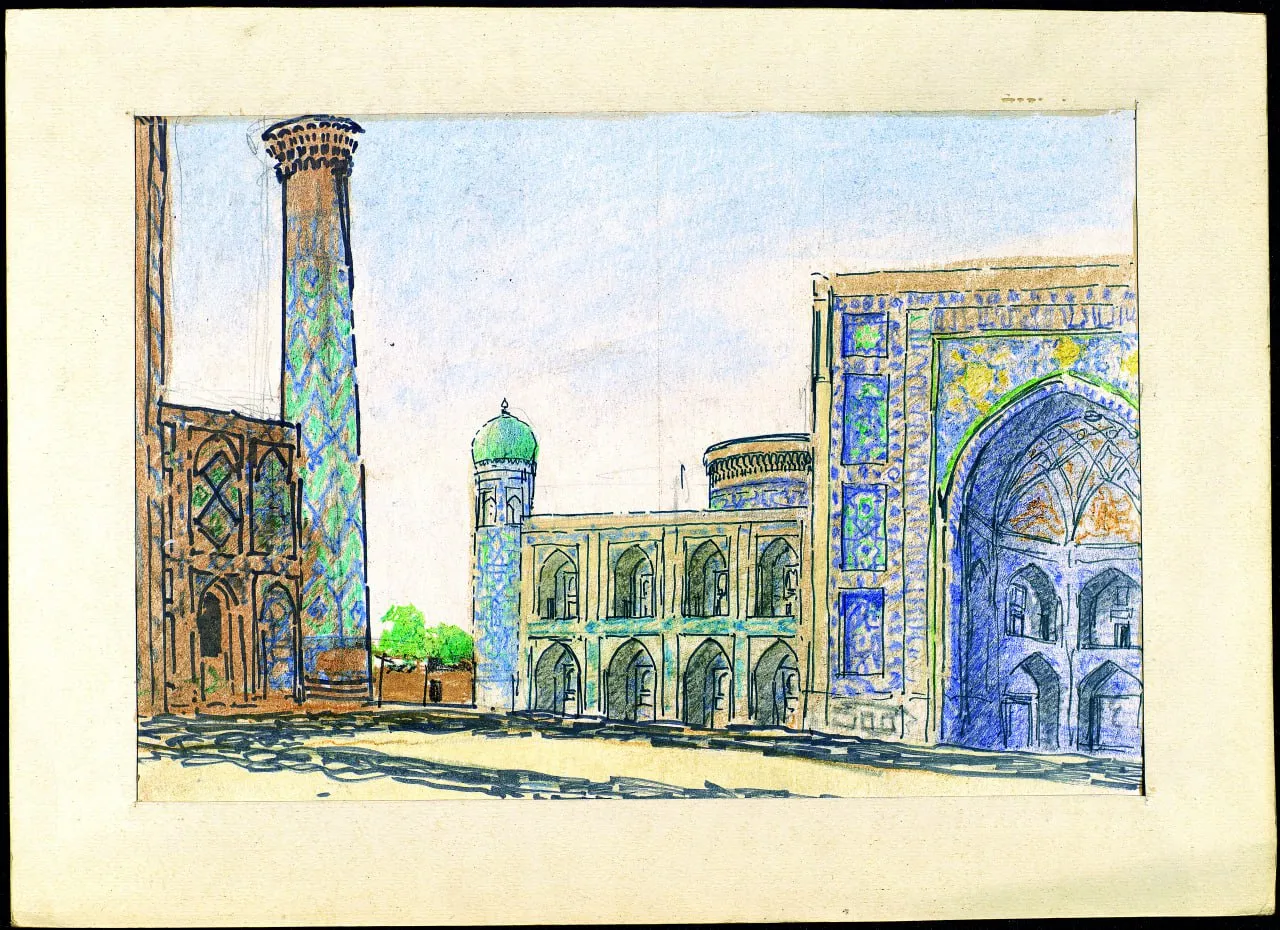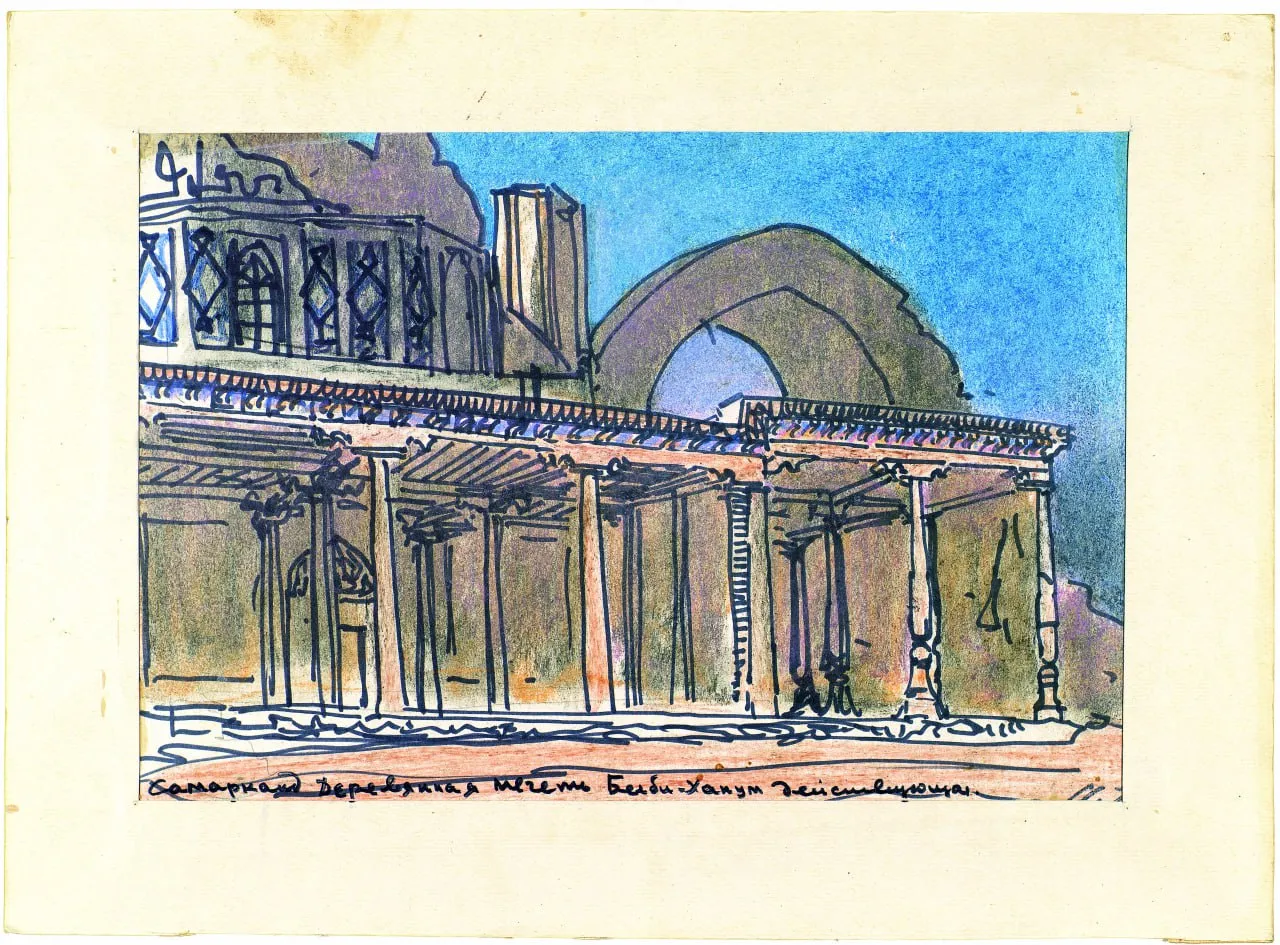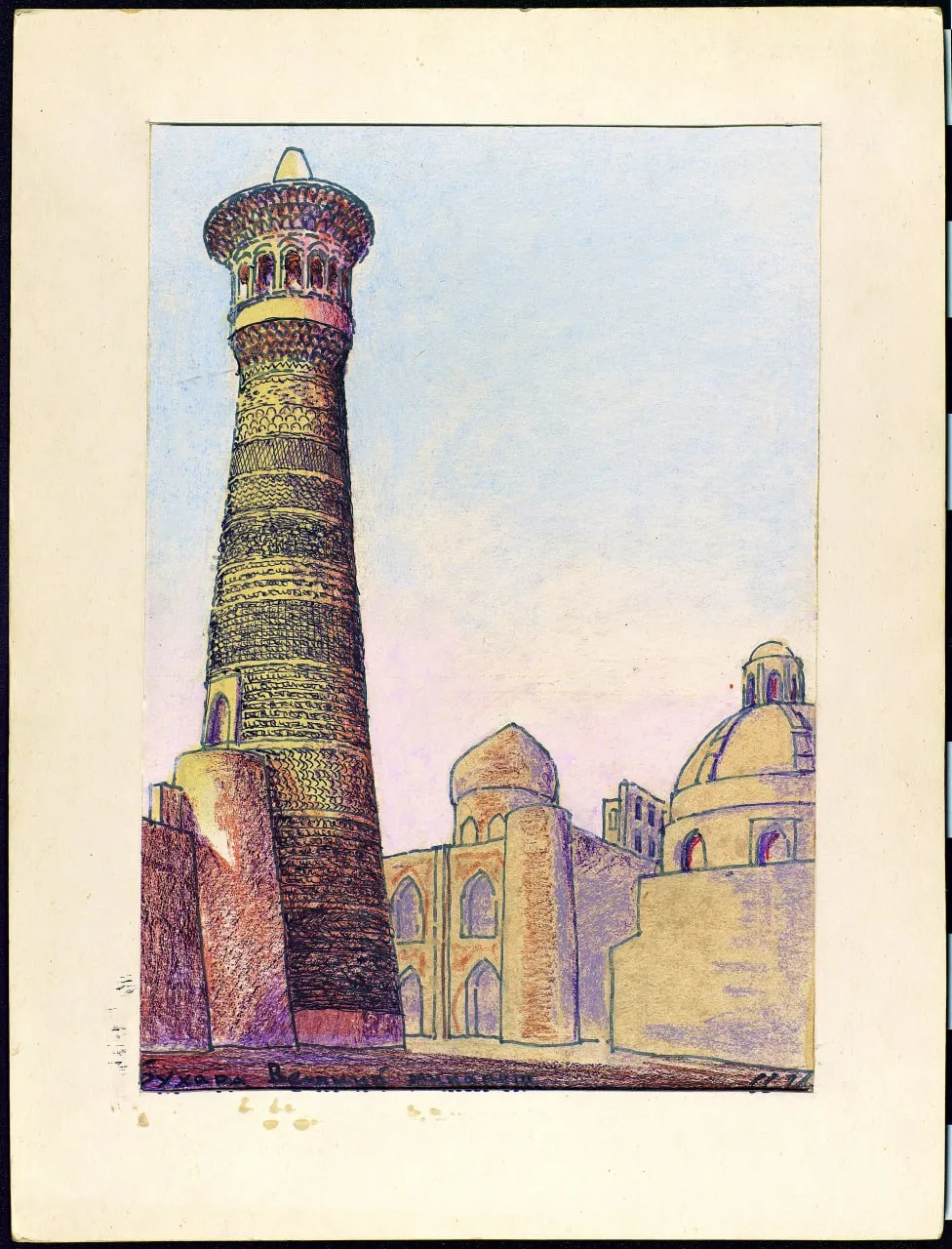Goberman was to become the largest researcher of folk art and traditional architecture of Moldova and the Carpathians. The landscapes of Samarkand, depicted in a variety of techniques – from oil painting to drawings with coloured pencils, became a milestone that marked the creative search of a young artist and determined his life’s path.
In the collection of the State Museum of the History of Religion, there are ten works by Goberman, made in the late 1940s. This album includes five of his works: three paintings, one pastel and one watercolour. The artist used oil on canvas to paint the ruins of the Bibi-Khanym Mosque (currently restored), built by Timur in 1399 – 1404. The Rukhobod mausoleum, built by Timur in 1380, and famous Sher-Dor Madrasah, complementing the ensemble of Registan Square in 1619 – 36, were painted on cardboard. The watercolours from the collection of the State Museum of the History of Religion depict the Tillya-Kari Mosque, as well as parts of the ensemble in the Registan Square. Finally, a picture with pastel crayons depicts a staircase leading to the Shah-i-Zinda Mausoleum complex.
The small but very diverse collection of works by D. N. Goberman allows us to better understand this important stage in the artist’s work, as well as to get acquainted with the most famous monuments of Samarkand.
You can learn more about this topic in the book-album “The Collection of the State Museum of the History of Religion” (Volume XII) from the series “Cultural legacy of Uzbekistan in the world collections”.
The general sponsor of the project is the oilfield services company Eriell-Group.



